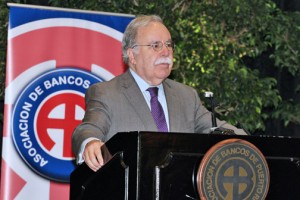Migration aggravating island’s battered housing market

The accelerated rate at which Puerto Rico is losing population — particularly the younger, productive segment — is placing significant pressure on the island’s housing market, which continues to experience ongoing decreases in sales and rental activity.
In a presentation during the 22nd annual Housing Congress hosted by the Puerto Rico Bankers Association, Economist Graham Castillo, of the Estudios Técnicos analyst firm, confirmed that both new and existing home sales have seen steady year-over-year declines, while the inventory of vacant properties has been climbing.
Between 2010 and 2013, Puerto Rico lost more than 180,000 residents to migration, according to the U.S Census. Of that number, about 44 percent are 24 or younger, have lower levels of education — only 2.5 percent of them have graduate or professional degrees — and little or no income.
“The majority of them are renters, which disproportionately affects the rental market,” Castillo said.
According to the numbers he presented, in 2012, Puerto Rico had 33,058 housing units for rent, up 3 percent from the prior year, and 34,692 for sale, up 1.5 percent from 2011 inventories.
And while those numbers climb, the inventory of new housing has been shrinking, he noted. As of June, 279 residential projects comprising 3,925 new housing units had been built and were ready to turn over to would-be owners.
“A drop in housing prices is limiting the market. There are many buyers ‘under water’ or with little equity in their homes,” Castillo said. “Developments priced at less than $200,000 in several markets are achieving sales, but the lack of funds for [government program] ‘Mi Nuevo Hogar’ is affecting such sales.”
Economic growth requires re-wiring
In his turn to address participants, Estudios Técnicos Founder José Joaquín Villamil suggested that Puerto Rico has the capacity to return to adequate levels of economic growth and establish the foundation for sustainable development.
But achieving that requires shifting to a new economy that is based on knowledge and is aligned with the new global reality, and implementing deep changes to Puerto Rico’s institutional framework.
“The areas of priority remain the same: reforming the labor market, the energy system and in general, regulatory processes,” Villamil said. “We have to improve the K-12 educational system and transform the tax system.”
In his talk, Villamil confirmed that if projections by Estudios Ténicos hold true, Puerto Rico’s economy would have shrunk by 15 percent between 2006 — when the recessionary period began — and 2017, when it should grow by 0.5 percent.
Furthermore, he noted that Puerto Rico’s shrinking population, job market and housing market — particularly in the San Juan metropolitan area — are creating a marked inequality between what he called “the two Puerto Ricos.”
“The loss of population was not the same throughout the island. If you draw an imaginary line from north to south from Vega Alta down to Juana Díaz, you will see that east of that line, population grew by 2.5 percent, while west of that, population declined by 1.4 percent,” he said.
The phenomenon creates an inequality that affects socio-economic conditions, which affect new home sales in towns most affected by migration.
To improve matters, he said Puerto Rico should aspire to develop an economy that is flexible, capable of innovation, productive, thriving on pluralism and sustainable. It should also be able to manage and capitalize on its institutions, technology and resources.
“Over the years, we’ve made institutions less flexible, and we have the capacity to innovate, but we must capitalize on our experience from the 1940s and 1950s,” he said. “That’s not to say that we have to do what they did, but we must recapture it to see how they did it.”
Informal housing poses problem
Meanwhile, Puerto Rico Planning Board President Luis García-Pelatti discussed the issue of informal housing, which presents a different set of socio-economic problems for the island.
At present, an estimated 70,000 dwellings fall in the category of informal housing, or dwellings that lack construction permits or — in many cases — adequate basic services.
“We have to define and develop the instruments to incorporate the demand for informal housing to the government’s housing policy,” he said. “In the process of avoiding the proliferation of informal housing, the Planning Board is looking to establish mechanisms to improve construction inspections.”
To achieve this, the agency will work with towns that have Municipal Permits Offices, to identify areas where essentially illegal housing is being built, he said.















